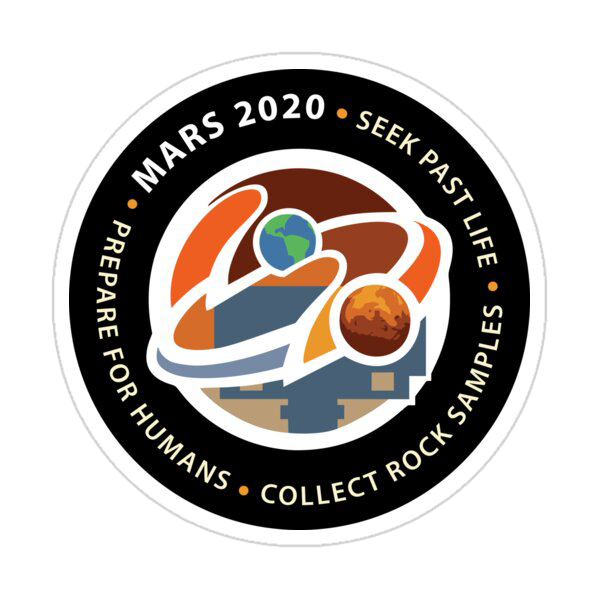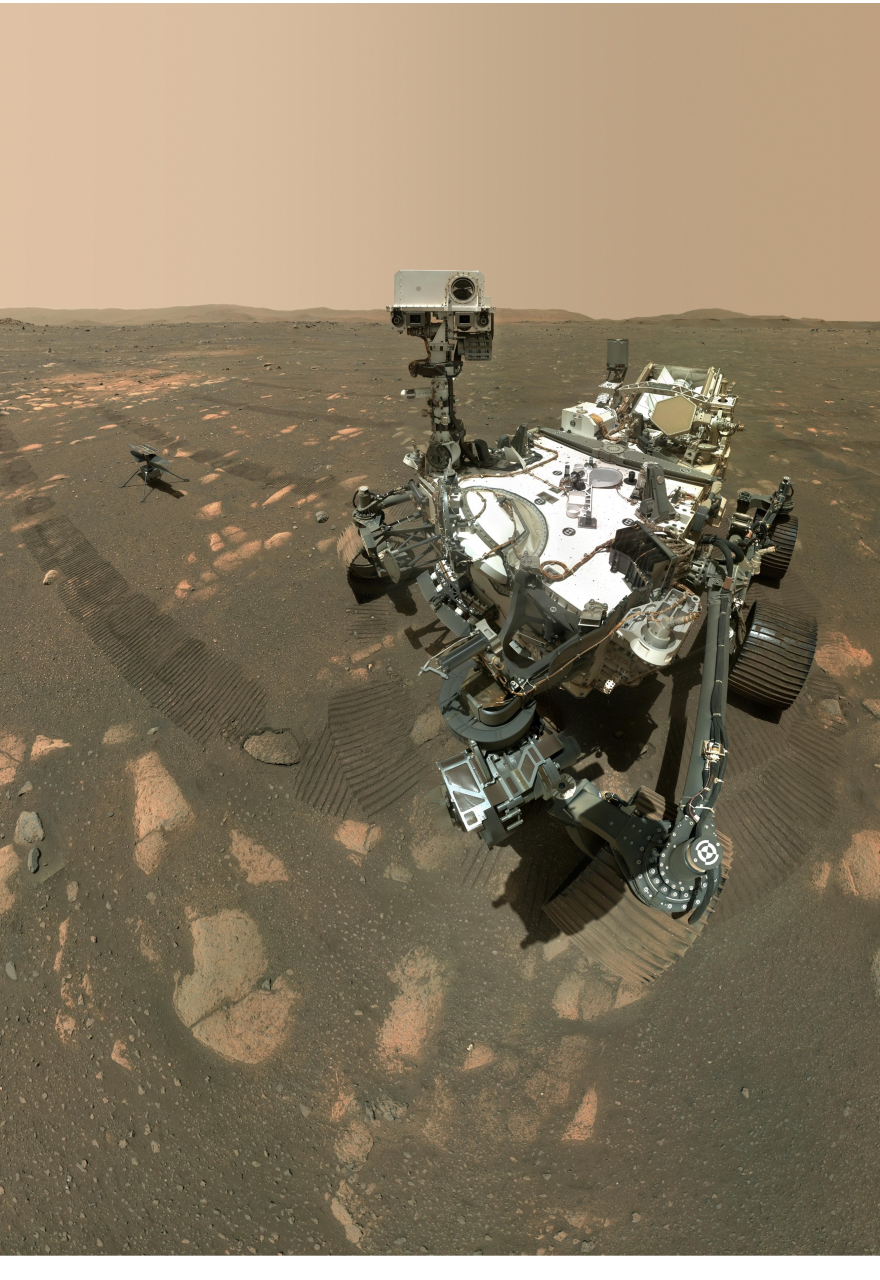

A selfie of Perseverance and Ingenuity taken April 6, 2021 by the wide-angle camera, WATSON, on the SHERLOC instrument, located at the end of the robotic arm. Image Credit: NASA/JPL-Caltech/MSSS
The 2020 Perseverance Rover was launched on July 17, 2020 carrying the experimental helicopter, Ingenuity. It landed in Jezero Crater (18.4 deg. N lat., 77.5 deg. E long.) on February 18, 2021. Orbiting spacecraft had revealed that the crater contained an ancient delta and had confirmed that clay minerals and carbonates were present. Formation of these implied a wet environment capable of preserving evidence of ancient life.
MEDA - Mars Environmental Dynamics Analyzer
MOXIE - Mars Oxygen ISRU Experiment
Front and Rear Stereo Hazcams, stereo Navcams
Mastcam-Z - Mast Zoom Camera
Mission Goals
Determine whether life ever existed on Mars. The mission rover focuses on surface-based studies of the Martian environment, seeking preserved signs of biosignatures in rock samples that formed in ancient Martian environments with conditions that might have been favorable to microbial life.
Characterize the Climate of Mars. The mission is seeking evidence of ancient habitable environments where microbial life could have existed in the past.
Characterize the Geology of Mars. The rover seeks evidence of rocks that formed in water and that preserve evidence of organics.
Prepare for Human Exploration. The Perseverance rover is demonstrating key technologies for using natural resources in the Martian environment for life support and fuel.
Characterize the Climate of Mars. The mission is seeking evidence of ancient habitable environments where microbial life could have existed in the past.
Characterize the Geology of Mars. The rover seeks evidence of rocks that formed in water and that preserve evidence of organics.
Prepare for Human Exploration. The Perseverance rover is demonstrating key technologies for using natural resources in the Martian environment for life support and fuel.
Objectives
Geology. Characterize the processes that formed and modified the geologic record of the crater and determine the habitability of an ancient environment.
Astrobiology. Determine whether an area of interest was suitable for life and look for signs of ancient life itself.
Sample Caching. Perseverance has 38 empty tubes to store samples of Mars rock and soil.
Prepare for Humans. Test technologies that would help sustain human presence on Mars including oxygen production from the Martian atmosphere.
Astrobiology. Determine whether an area of interest was suitable for life and look for signs of ancient life itself.
Sample Caching. Perseverance has 38 empty tubes to store samples of Mars rock and soil.
Prepare for Humans. Test technologies that would help sustain human presence on Mars including oxygen production from the Martian atmosphere.
Archived Data Sets
Science data will be archived and made available to the public in the PDS. After time has been allowed for mission startup, the data will be released on a 3-month basis beginning August 20, 2021. Data from the various instruments will be archived at 4 nodes:
The Atmospheres Node
The Cartography and Imaging Node
The Geosciences Node
PIXL - Planetary Instrument for X-ray Lithography
Returned Sample Science
RIMFAX - Radar Imager for Mars Subsurface Exploration
SHERLOC - Scanning Habitable Environments with Raman and Luminescence for Organics and Chemicals
SuperCam - LIBS, Raman, Time-Resolved Fluorescence, VIS/IR, RMI
Returned Sample Science
RIMFAX - Radar Imager for Mars Subsurface Exploration
SHERLOC - Scanning Habitable Environments with Raman and Luminescence for Organics and Chemicals
SuperCam - LIBS, Raman, Time-Resolved Fluorescence, VIS/IR, RMI
SPICE
 PDS: The Planetary Atmospheres Node
PDS: The Planetary Atmospheres Node

